This colony has also slowed a bit, but does still have brood. In the second photo, the Queen is eating a dandelion seed.
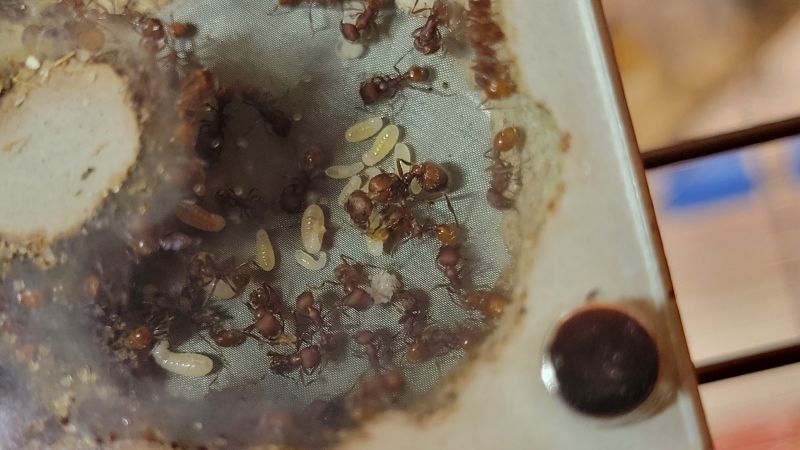
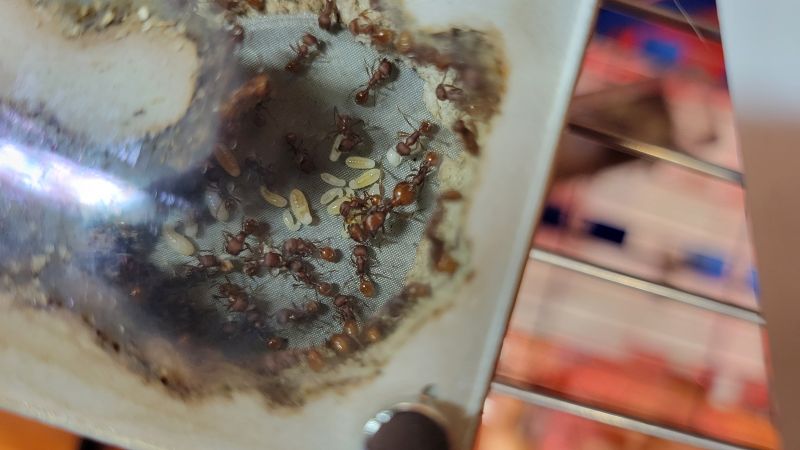
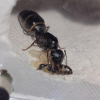
This colony has also slowed a bit, but does still have brood. In the second photo, the Queen is eating a dandelion seed.


Currently kept species
L. neoniger, P. occidentalis, C. modoc, C. novaeboracensis, C. vicinus, T. immigrans, A. occidentalis, S. molesta, P. imparis, M. kennedyi, M semirufus, F. pacifica, P. californica, M. ergatogyna.
Previously kept species
T. rugatulus, B. depilis.
Looking for
Myrmecocystus pyramicus, Myrmecocystus testaceus
Pheidole creightoni, Pheidole inquilina, Crematogaster coarctata, Crematogaster mutans
I'm about to be the warden of a Pogonomyrmex colony from THA soon myself. I am starting in a regular mini and have a fallen fortress ready to go when they need the room. I'm going to use the out world from it with the mini right away sense the nest is detachable.
I'm curious what your growth rate is, how much time do you image your fallen fortress is going to be enough room for them?
I'm about to be the warden of a Pogonomyrmex colony from THA soon myself. I am starting in a regular mini and have a fallen fortress ready to go when they need the room. I'm going to use the out world from it with the mini right away sense the nest is detachable.
I'm curious what your growth rate is, how much time do you image your fallen fortress is going to be enough room for them?
It really depends on how much protein you give them. They can live on just seeds, but if you give them stuff like fruit flies, crickets, fish food flakes, etc... Their growth rate is a lot higher. If your starting with a queen and 20 workers, a fallen fortress could be good for about 6 months or so at least.
Currently kept species
L. neoniger, P. occidentalis, C. modoc, C. novaeboracensis, C. vicinus, T. immigrans, A. occidentalis, S. molesta, P. imparis, M. kennedyi, M semirufus, F. pacifica, P. californica, M. ergatogyna.
Previously kept species
T. rugatulus, B. depilis.
Looking for
Myrmecocystus pyramicus, Myrmecocystus testaceus
Pheidole creightoni, Pheidole inquilina, Crematogaster coarctata, Crematogaster mutans
This colony is still going. Just has never taken off quite like my older colony. I may move them to a different home soon to clean their current nest out.
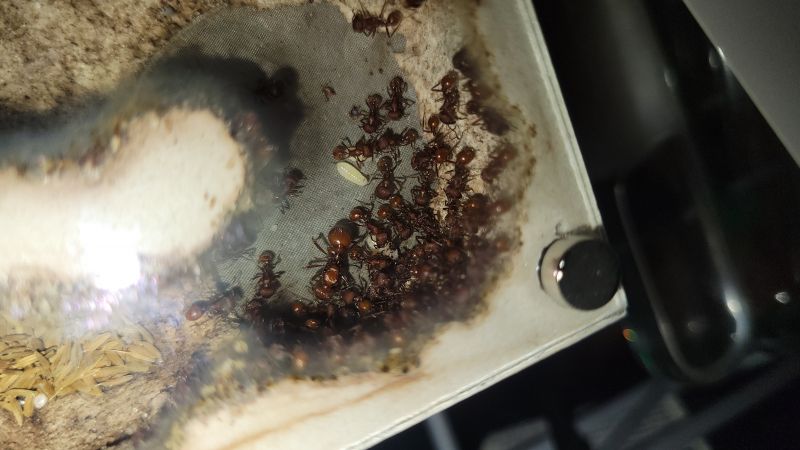
Currently kept species
L. neoniger, P. occidentalis, C. modoc, C. novaeboracensis, C. vicinus, T. immigrans, A. occidentalis, S. molesta, P. imparis, M. kennedyi, M semirufus, F. pacifica, P. californica, M. ergatogyna.
Previously kept species
T. rugatulus, B. depilis.
Looking for
Myrmecocystus pyramicus, Myrmecocystus testaceus
Pheidole creightoni, Pheidole inquilina, Crematogaster coarctata, Crematogaster mutans
This colony is starting to do better now. We have some nice healthy larvae, and lots of new eggs!
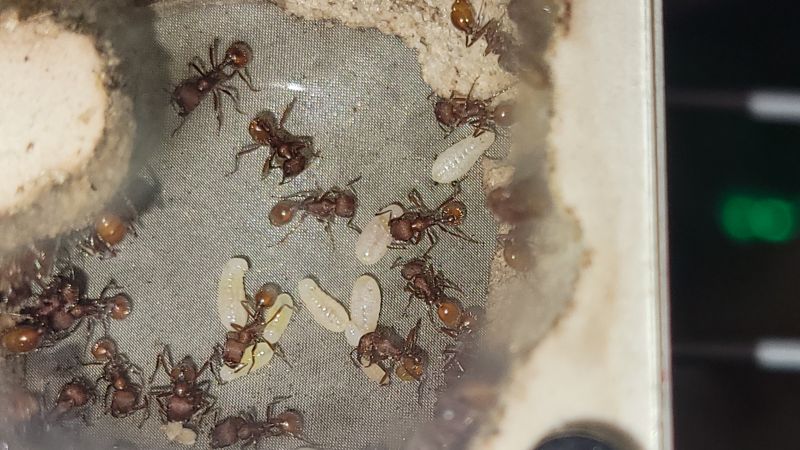
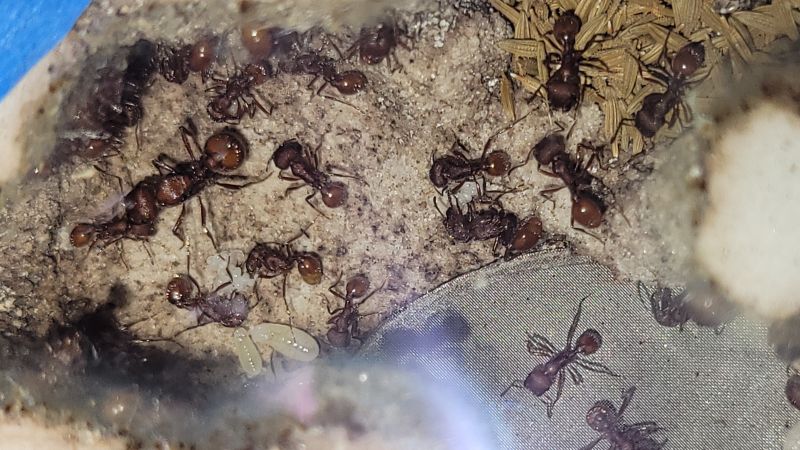
Currently kept species
L. neoniger, P. occidentalis, C. modoc, C. novaeboracensis, C. vicinus, T. immigrans, A. occidentalis, S. molesta, P. imparis, M. kennedyi, M semirufus, F. pacifica, P. californica, M. ergatogyna.
Previously kept species
T. rugatulus, B. depilis.
Looking for
Myrmecocystus pyramicus, Myrmecocystus testaceus
Pheidole creightoni, Pheidole inquilina, Crematogaster coarctata, Crematogaster mutans
We now have several pupae, lots of larvae, and a fresh batch of eggs!
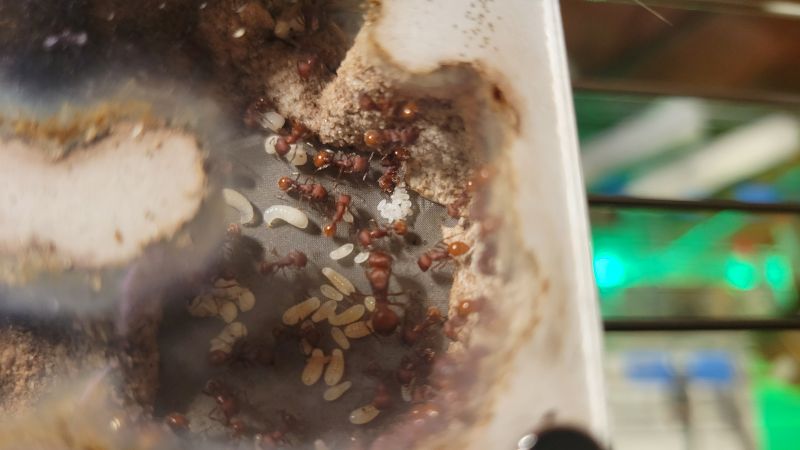
Currently kept species
L. neoniger, P. occidentalis, C. modoc, C. novaeboracensis, C. vicinus, T. immigrans, A. occidentalis, S. molesta, P. imparis, M. kennedyi, M semirufus, F. pacifica, P. californica, M. ergatogyna.
Previously kept species
T. rugatulus, B. depilis.
Looking for
Myrmecocystus pyramicus, Myrmecocystus testaceus
Pheidole creightoni, Pheidole inquilina, Crematogaster coarctata, Crematogaster mutans
0 members, 0 guests, 0 anonymous users